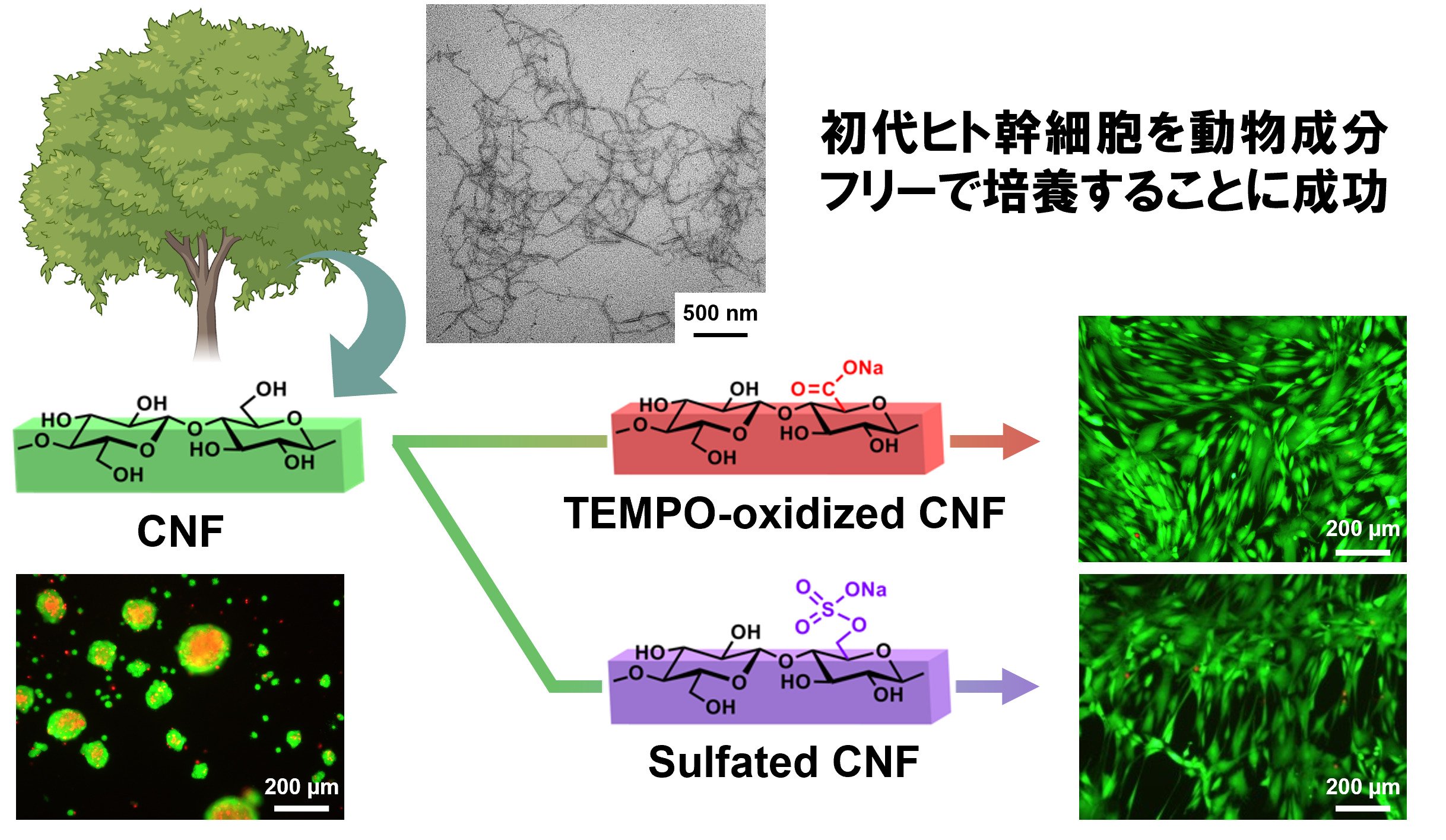Prof. KITAOKA and his research group have successfully achieved the controlled culture of human stem cells using only plant nanomaterials, without any animal sources.
Tree-derived cellulose nanofibers target regenerative medicine.
POINT
- A stem cell culture system that "does not use any components derived from other animals" is essential for the realization of regenerative medicine.
- Success in developing cell culture scaffolds without any animal components by using tree-derived cellulose nanofibers.
- Controlled culture of human stem cells outside the body is expected to have practical applications in regenerative medicine and drug discovery support infrastructure.
SUMMARY
Regenerative medicine is a cutting-edge medical technology to repair and regenerate tissues and organs that have been damaged by disease or injury. To achieve this, it is necessary to efficiently and appropriately culture human cells outside the body, but until now, it has been necessary to extract collagen and other biological components from non-human animals and use them as culture substrates. Therefore, xeno-free (xenogeneic component free) cell culture scaffolds have been desired from the viewpoint of immune rejection and infection risk.
Now, by specifically introducing biofunctional groups on the surface of tree-derived cellulose nanofibers (*1), we have succeeded in xeno-free culture of mesenchymal stem cells (*2) from human iliac bone marrow without using any animal-derived components. The excellent culture efficiency, comparable to that of conventional animal-derived collagen, was achieved using only plant-derived nanomaterials such as cellulose nanofibers.
A joint research group led by Ms. KAI Ritomo, a second-year master's student at the Graduate School of Bioresource and Bioenvironmental Sciences, Kyushu University, Assistant Professor HATAKEYAMA Mayumi and Professor KITAOKA Takuya at the Faculty of Agriculture, Kyushu University, and Dr. IWAMOTO Shinichiro at Yokogawa Electric Corporation, focused on the "rigid nanofiber morphology" and "regular polysaccharide interface structure", which are nanostructures common to both trees and humans. The joint research group discovered that the introduction of biofunctional groups such as sulfate and carboxylate groups to tree-derived cellulose nanofibers, which inherently have no cell adhesion ability, while maintaining their crystalline structures, enables excellent cell adhesion and proliferation potentials.
This discovery is expected to benefit not only regenerative medicine using human stem cells, but also the development of technologies to engineer cells with in vivo tissue/organ functions in vitro and fundamental technologies to support drug discovery using these cells/tissues/organs.
The research was published in Elsevier's journal Carbohydrate Polymers on Wednesday, July 10, 2024 (Japan time).


Comment from the researcher
This research discovered that woody materials, which have a long history of use in building materials and pulp & paper, can be used to culture human stem cells through nanotechnology. For me as a graduate student, this research has led me to a new fascination with natural polysaccharides as sustainable resources. I would like to continue to be involved in materials research that harmonizes the environment and human health. (KAI Ritomo, 2nd year master's student)

GLOSSARY
(*1) Cellulose nanofiber
Natural nanofiber materials derived from structural polysaccharides found in trees and plants, produced by down-sizing bulk polysaccharides to the nanometer scale (a nanometer is one-billionth of a meter).
(*2)Mesenchymal stem cell
Cells found in the adult body that can differentiate into a variety of cells, including bone, cartilage, fat, and muscle.
Paper Information
Publication: Carbohydrate Polymers
Title: Primary human mesenchymal stem cell culture under xeno-free conditions using surface-modified cellulose nanofiber scaffolds
Authors: Ritomo Kai, Mayumi Hatakeyama, Shinichiro Iwamoto, Takuya Kitaoka
DOI: 10.1016/j.carbpol.2024.122479
Research-related inquiries
KITAOKA Takuya, Professor












 Contact
Contact
 Access Map
Access Map

